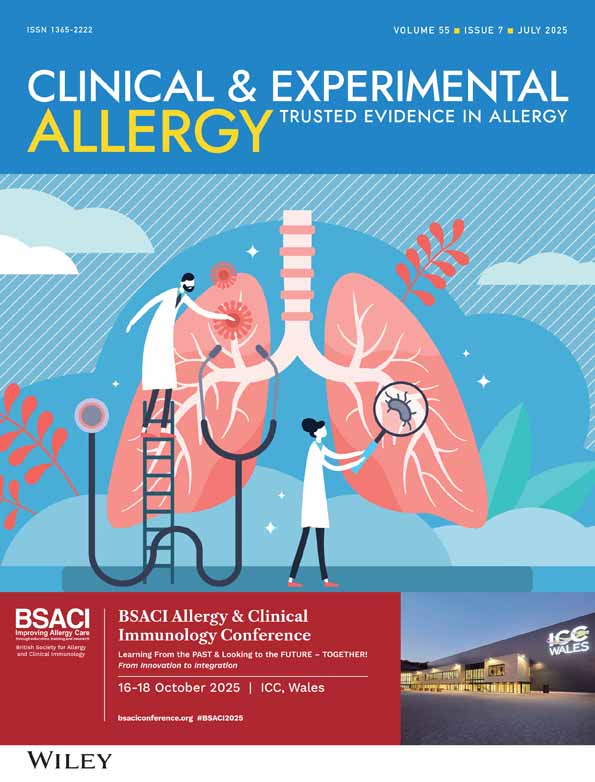The influence of terfenadine and ipratropium bromide alone and in combination on bradykinin-induced nasal symptoms and plasma protein leakage
Summary
Nasal instillation of bradykinin elicits many of the characteristic features of rhinitis. To assess the relevance of histamine release from metachromatic cells and the activation of cholinergic pathways, we investigated the effects of terfenadine, a histamine H1-receptor antagonist, and ipratroprium bromide, a selective antimuscarinic agent, on bradykinin induced rhinorrhoea, nasal airways resistance (NAR), nasal pain and plasma protein leakage. Oral terfenadine (120 mg) or matched placebo and nasal ipratropium bromide (80 μg) or matched placebo were administered at 4 hr and 30 min respectively prior to bradykinin nasal challenge in two randomized, double-blind and cross-over studies on eight non-rhinitic subjects. Thus subjects received either double-placebo, oral terfenadine and nasal placebo, oral placebo and nasal ipratopium bromide or oral terfenadine and nasal ipratropium bromide, as pretreatment. Bradykinin challenge induced mean maximal increases of 57%, 59%, 77% and 72% in NAR on the placebo, terfenadine, ipratropium bromide and terfenadine plus ipratropium bromide pretreatment days respectively. These increments were not significantly different. Similarly rhinorrhoea and nasal pain induced by bradykinin nasal challenge were not significantly different on the four challenge days. Bradykinin nasal challenge caused a mean maximal increase in albumin levels in recovered nasal lavages of 11.5, 13.0, 12.2 and 12.3 times of baseline levels on the placebo, terfenadine, ipratropium bromide and terfenadine plus ipratroprium bromide pretreatment days respectively. Similarly total protein levels achieved a mean maximal increase of 8.0, 8.2, 7.9 and 8.8 times of baseline levels on these challenge days. The increments in both albumin and total protein did not significantly differ on the 4 challenge days. This study, therefore, demonstrates that cholinergic pathways and mast cell release of histamine do not contribute to increase in NAR, rhinorrhoea and plasma protein extravasation induced by bradykinin.




